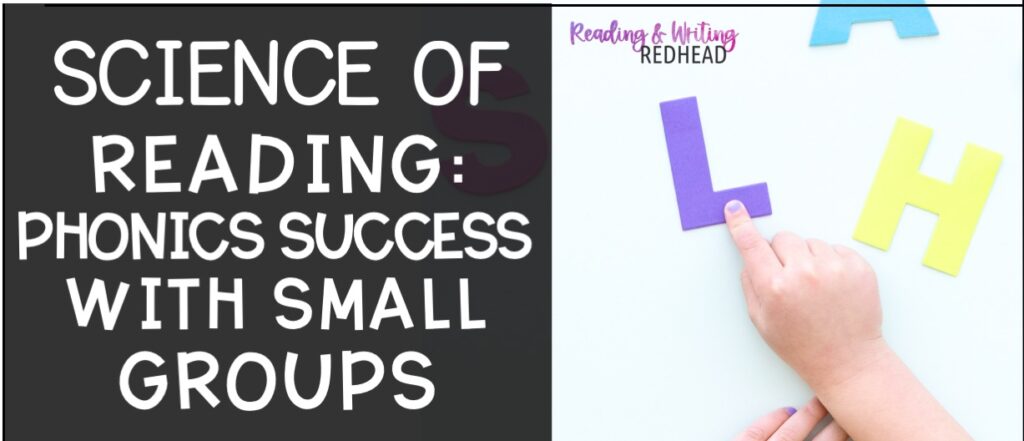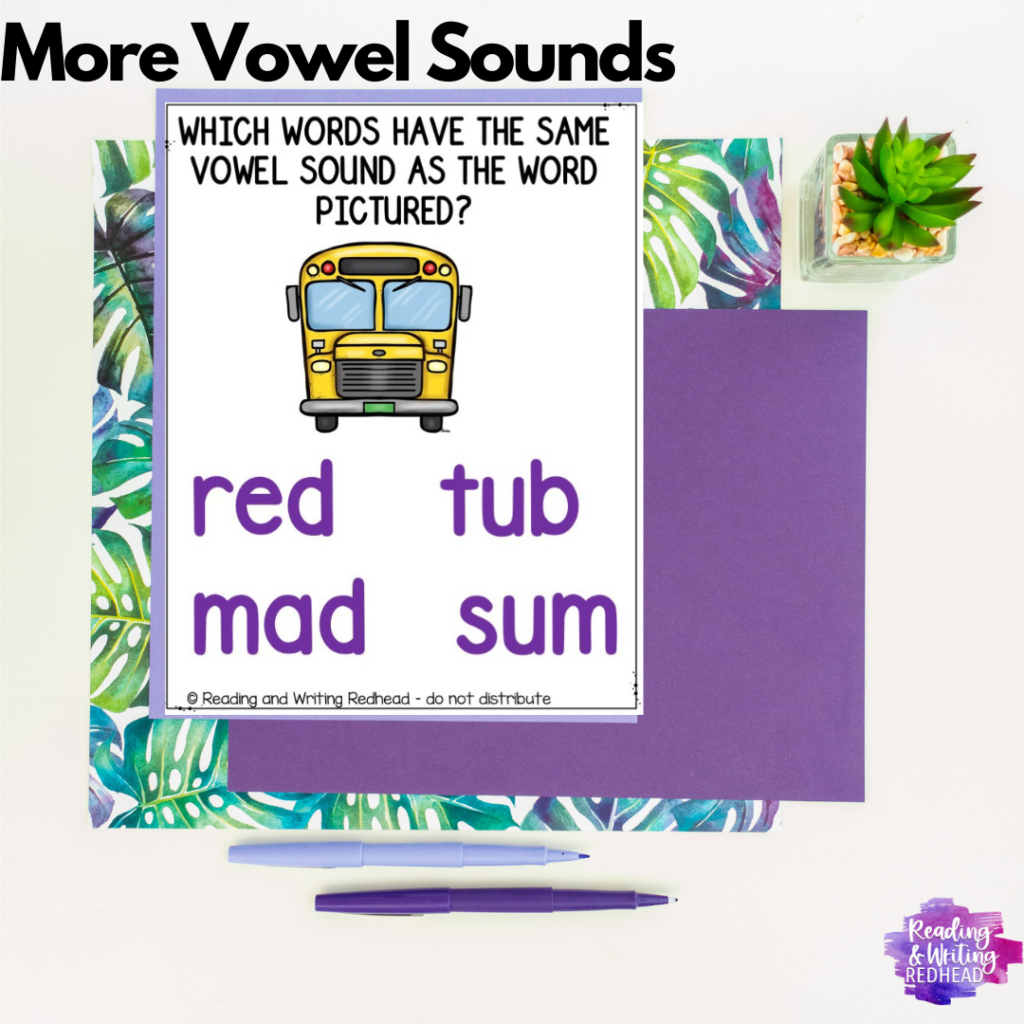
Science of Reading Phonics Centers: Tips for Success with Small Groups
The Science of Reading provides us with a framework for effective phonics instruction.
By incorporating what we know from the Science of Reading into your small group phonics centers, you can create effective learning experiences.Additionally, implementing these strategies at your teacher table can further enhance your phonics instruction
Let’s check out some tips and strategies for organizing and implementing successful Science of Reading phonics centers and small groups work.
SCIENCE OF READING PHONICS CENTERS
(Scroll down for suggestions for activities for the teacher table)
Explicit Instruction:
Before students head to a center, make sure they have had (or provide) explicit instruction on the target phonics skill. Model the skill, provide guided practice, and offer opportunities for independent practice.
For example, if students are working on consonant digraphs I might provide a lesson including reviewing the digraphs and sounds, reading words with digraphs in a pocket chart and then have students practice spelling words with digraphs on a white board.
Systematic Progression:
Use a gradual increase in difficulty as students progress through the science of reading phonics center activities. Start with simple skills and gradually introduce more complex patterns.
For example, you probably want to match the skills you have students work on to your phonics and/or phonemic awareness skills. Stick with practicing the current skills, such as r controlled vowels, and revisit previous skills such as consonant digraphs and cvc words as needed.
For students who need a challenge, try using multisyllabic words with the focus skills. For example, some students can complete a center with 2 and 3 syllable words with r controlled vowels while others go to the main center.
Multisensory Approach:
To make the most of your science of reading phonics activities, incorporate activities that use multiple senses to enhance your students’ learning. Use visuals and hands on experiences to reinforce phonics concepts.
For suggestions on materials to use, check about 1/3 of the way down on this blog post that I shared this summer.
Differentiated Instruction:
I know it’s hard to do this all of the time, but make it a goal to tailor your phonics centers to meet the needs of all learners. Provide varying levels of difficulty and support so students are all successful.
You can try the suggestion for differentiation I mentioned above for stronger readers, or use previously learned skills for more struggling readers. I also sometimes would take a small group of students who needed more support to the teacher table and have them skip one of the centers.
Data-Driven Instruction:
Use ongoing assessment to monitor student progress and adjust your phonics centers. This will help you identify areas where students may need additional support or enrichment. For example at my school, we use FUNdations, so the FUNdations quizzes are a perfect check in. Teachers use these to modify their centers.
TEACHER TABLE
Explicit Instruction and Differentiation Instruction:
When you have a small group right in front of you, you can really drill down and work on what your students need. For example, our school uses Geodes decodable texts that go along with Fundations. A teacher might do three different thingsg with three different groups.
Group one might need to work on decoding, so the teacher might preview ten words and have students tap and blend all the words. Be explicit – if the words all have r controlled vowels, point that out (if students don’t notice), review the sounds of r controlled vowels and then read the words.
Then read the text chorally and have students look for those words. As for differentiation, another group might need to work on fluency so they might read the same text chorally but stop and have volunteers or the whole group reread with different emphasis, phrasing or emotion. And a third group of advanced readers might read silently and then participate in a comprehension conversation.
Systematic Progression:
Just like with centers, make sure your science of reading phonics activities at the teacher table are not random, and instead progress in a meaningful way!
Keep reading for even more tips!

Multisensory Approach:
The teacher table is a great place to try new hands on materials while you can supervise students. This blog post has some great suggestions for kinesthetic materials – just scroll about one third of the way down. For example, pom poms, spider rings, bingo chips and shaving cream are just a few examples of things to try!
Data-Driven Instruction:
Use the teacher table for formative assessment. I keep a clipboard with sticky notes on it. Before each lesson, I write student names and the date at the top of each post it. Then as I notice things, I jot them down and can refer to them later in order to plan future lessons or interventions.
Ready to Go Activities from Teachers Pay Teachers
Wouldn’t be it easy for you if you had ready-to-use activities and resources from Teachers Pay Teachers to incorporate into your phonics lessons or centers that already align with the science of reading? Theses resources have a lot to offer!
Key Features of the Phonics Activities Resource for 1st grade
- Comprehensive Coverage: Addresses a wide range of phonics skills, including cvc words, r-controlled vowels, digraphs, and more.
- Differentiation Options: Includes various levels of difficulty to meet the needs of all learners.
- Hands-On Activities: Provides engaging tasks that require active participation.
- Answer Keys: Offers teachers easy grading and feedback.
- Versatility: Can be used in small groups, centers, or independently.
How to Use This Resource
This resource can be easily integrated into your classroom in various ways:
- Small group instruction: Use the task cards for targeted phonics practice.
- Reading center: Place the task cards in a center for independent work.
- Whole class activity: Incorporate the task cards into your phonics lessons.
Unlock the Potential of Phonics Practice
By using this comprehensive phonics task resource, you can provide your students with the tools they need to master tricky syllables and become confident readers. With engaging activities and targeted practice, your students will develop the skills necessary to make progress in their reading.
Download the resource today and watch your students’ phonics skills soar! You can also click on the cover or any of the sneak peek images below.



Do you teach second grade?
Don’t worry! There is a similar, but just as handy 2nd Grade Phonics Centers Activities resource aligned to the Science of Reading. These activities are also perfect for the teacher table!

And there is a kindergarten version too (I just haven’t updated the cover yet, but it is in the same resource line). Check it out here or click on any image below.
.
Five Star Reviews:
Check out some teacher feedback – I know I always read feedback when I am looking for something, so let me share it so you don’t have to go on a hunt!
Feedback for the kindergarten resource: “This is a great time saver and wonderful for differentiation..”
For the first grade activities: “Great for my SPED kiddos! Thanks :)”
And some of the individual activities are available separately – for example the capital and lower case letters playdoh mats: “An amazing resource! Thank you for sharing your hard work and creativity with others!!!”
And the sounds and phonemes activities: “The activities are great for phonological awareness.”
And finally, the kindergarten blend and read CVC words: “Activity was very helpful in targeting the different vowels and blending words.”
Other blog posts you may want to check out:
- 4 Ways to Boost Your Phonics Lessons
- How can Word Riddles Boost Phonics Skills?
- 6 Tips for Teaching Phonics with Fidget Poppers
- Tips for Teaching Capitalization and Punctuation
- Fun Must Have Phonics Resources for Grades 1 and 2
If you want to save this blog post, pin this image below! If you try any of the strategies, let me know!
Good luck with your week. You got this!!









